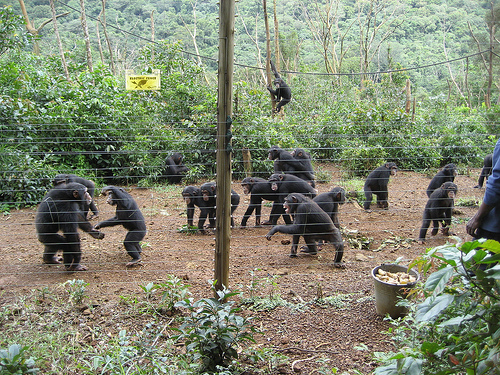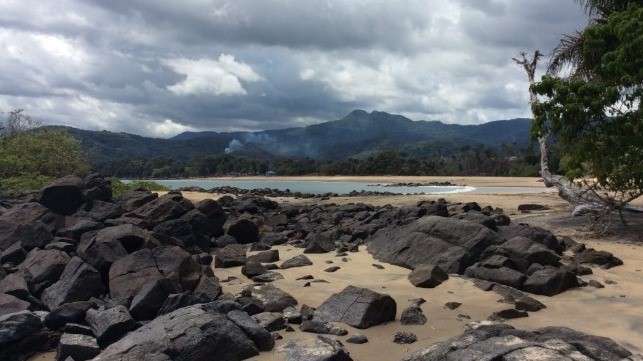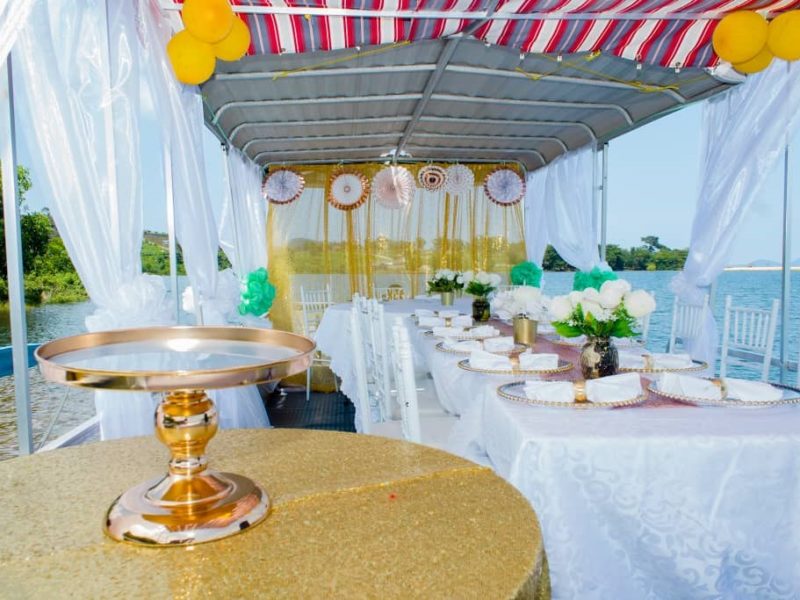Issues at Large 11-23-09
Tourism: Birds as Tourist Attraction
For ornithologists, (that is people interested in the study of birds) Sierra Leone is a bird’s paradise in West Africa, as it is a country that has varied species of birds.
There is also the belief that there are some species of birds which are only found in Sierra Leone, and for which tourists could spend millions just to come and see.
Recently, the world community of ornithologists through support from the Smithsonian Institute has discovered a new species of the famous robin.
Named the ‘Olive-backed forest robin’ by scientists because of its distinctly dark green back and rump, adult birds measure 11cm in length, with the males having an orange coloured throat and breast, yellow belly, olive back and black feathers on the head.
The bird was first spotted by Smithsonian scientists in West Africa.
While other countries continue to make inroads into making tourism a profitable venture, we are yet to come out of our usual concept of tourism as a non profit endeavor.
Wanted: Low Impact Eco-tourism Circuit For Salone
With spectacular rain forests, criss-crossed by streams and rivers, spectacular sites and marvelous hills and water falls, Sierra Leone can well serve as the world’s leading low income impact eco-tourism venue for western tourists.
With the proper management and support, tourists could travel by canoes or other small boats along unspoiled rivers, enjoying the exceptional sightings available. The Wildlife Conservation Society (WCS) can be effective in ensuring that rain forests like the Gola forest start generating income by bringing tourists to paddle in canoes. We could document our rivers wildlife and identify potential sites for eco-lodgers, a fitting way to make money while keeping our natural resources in a pristine condition. One step in this direction is to develop eco-tourism in the Gola forest and other like areas like the Binkongo Falls, the Bintumani Hills, the Baffin River, the Sewa, the Moa, the Great and the Little Scarcies, and several sites in the country. All this will involve conserving biodiversity and developing ecotourism.
Sierra Leone has little background in conservation or tourism and has inadequate infrastructure, few roads and hotels and commercial rest houses nationwide, coupled with an unreliable transport system makes the challenges of putting this concept into practicality.
The Minister of Tourism and Culture Mr. Hindolo Sumanguru Trye needs total support both from the government as well as from the private sector.
Working Parliament Walkouts
The recent decision by members of the Sierra Leone People’s Party walking out of the House to show their discontent with the Mines Bill and other issues shows that democracy is working well in the country.
The concern however is over the frequency with which opposition members of Parliament are now walking out of the House, leaving the job for which they were voted for in the first place. The issue of walking out of parliament over disagreement with a debate is part of the opposition’s tool in ensuring that their disagreement is made known. But is there no other way out instead of walking out? It is believed that through walkouts make the point of the opposition known, it is counter-productive as it only gives the ruling government the chance to rush through hastily made bills into law, thereby causing bad laws to be enacted into our constituency.
Tired Miners & Desolate Land
The diamonds have dried up, and the land remains uglier, bearing the damages of uncontrolled diamond extraction which has now seen left over pits swarming with rodents, malaria, and accidents.
In Kono, the desolate lands can be seen all over the district where diamond extraction had been in going on. What has emerged in all this desolate land is that governments in this country have failed the people. Who is to blame for the open pits all over the land? Â Was there no agreement with the diamond mining companies that rehabilitation of the land will be the priority of every company extracting diamonds from the land?
What about the environmental impact assessment report and what was the preparation for such a situation when the diamonds would have dried up and the land has been torn up through mining operations?
What about the people, whose life, since birth had been engaged in the mining of diamonds, and what are the contingency plans to be put in place with the conclusion of the diamond rush?
Graves yards destroyed, hospital foundations dug up, recreation centers now mining pits and even the dead were not spared as graves were dug up in the search for diamonds. Well, the reality has started catching up, now the mad discovery of the gem is no more.
What next?
And Rutile Extraction Scars Remain
The extraction of minerals by the Sierra Rutile Company shows that there is a serious concern here, creating craters and diminishing the land mass, while causing communities to be shifted and even demolished. The question is: is there hope of the lands being reclaimed after the extraction by the huge earth eating dregs have finished their work?
And what is the protection for the people and the land after this extraction, where will the people go after this sort of life is over in their land.
While multi-national companies continue to make huge profits from our communities, the same activity is having a negative impact on the environment, and this is not in the interest of the community, and by implication the country?
What plans, if any are being prepared in the event this type of mining is over? Also, what guarantee, if any has the government prepared from these multi-national companies that the situation will be put under control.
There is a lot the Ernest Koroma administration inherited from the past government, but which remains unsolved just as it used to be. What hope therefore can the people have for any government, past and present?
Did Tejan-Kabbah Sell Yenga?
Former president of Sierra Leone Mr. Ahmad Tejan-Kabbah needs to be invited to Parliament to explain a very touchy but important issue. The question is; did Mr. Tejan-Kabbah sell Yenga to the Republic of Guinea while he was in power?
According to unverified reports, when rebels of the RUF had repeatedly tormented the government of Mr. Kabbah, resulting to his administration being fragile and dependent on foreign troops, he (Kabbah) had gone into a covert agreement with then Guinean leader Lansana Conteh to take Yenga and its surroundings in exchange they are to protect the government.
Guinean troops, including a heavy amour mechanized unit, and an engineering platoon had been moved, not across the Moa in Yenga, but from Kambia where a convoy of heavy duty weapons carriers, artillery pieces and other ground to air and ground to ground missiles to Yenga. This shows that there was an official agreement allowing such armaments to be permanently mounted there.
If it was just a reconnaissance unit, these Guineans troops would not have set up permanent structures and even fortified with concrete the artillery positions as well as the bunkers.
If there is any talk of Yenga, the present government should always include Tejan-Kabbah as he has the answers why the Guinean troops continue to dig in and claim Yenga as theirs.
Stay with Sierra Express Media, for your trusted place in news!
© 2009, https:. All rights reserved.







Pingback:Tweets that mention Issues at Large 11-23-09Â |Â Sierra Express Media -- Topsy.com
/